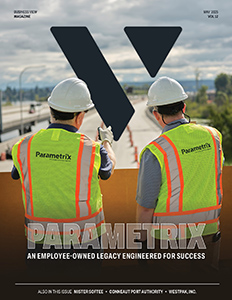Strategic budgeting: Why it matters for every taxpayer
Source: https://www.americancityandcounty.com/, Tom Amburgey, Mark Funkhouser and Nick Mastronardi, First Published May 21st, 2025
State and local budgets are under pressure. Rising costs, aging infrastructure and growing demand for public services have stretched resources thin, making challenges even harder due to the economic fallout from the pandemic. While many governments are seeing their finances stabilize, this doesn’t mean the tough decisions are over.
In today’s environment, every dollar must work harder. That’s why communities are shifting away from traditional budgeting models and adopting strategies that connect spending with tangible results. When money is tight, it’s not just about balancing the books. It’s about making meaningful progress on what matters most.
Strategic budgeting helps governments do just that. It’s not just a financial framework. It’s a way to link resources to goals, improve transparency and ensure that public funds are used where they will have the most impact.
What is strategic budgeting?
How cities and states manage their budgets directly impacts daily life, influencing everything from road conditions and park maintenance to public safety and school funding. Strategic budgeting is a financial planning method that aligns government spending with clear, community-driven goals. Although it may sound technical, strategic budgeting is deeply relevant to taxpayers — it affects the quality of public services and the effectiveness of government responses to community needs.
Related: These are the 10 fastest growing counties in the U.S.
Unlike traditional approaches that rely on static spreadsheets and outdated accounting practices, strategic budgeting connects funding directly to results. This allows cities to adjust their spending in response to changing priorities.
When every dollar is tied to a clear goal, it means government services support real needs, projects get completed and transparency makes residents feel their concerns are being heard. It’s a way to ensure that, even in tough economic times, government can still make meaningful progress on the issues that matter most — including public safety, affordable housing and community wellbeing.
From stagnation to strategy
Traditional budgeting methods allocate funds based on historical spending, which can lock governments into outdated priorities. Budget adjustments typically happen only once yearly, limiting the ability to pivot quickly when new needs arise. In contrast, strategic budgeting ties each expenditure to specific, measurable goals, enabling a government to be more responsive and efficient.
Consider a city that wants to improve its transportation infrastructure. Under a traditional budgeting system, funds might be allocated based on past spending, with adjustments made infrequently. This can result in continued funding for underperforming programs and limited flexibility for innovation.
Related: Mission possible: How cities and counties can innovate to overcome fiscal challenges
With strategic budgeting, that same city would set a goal to reduce traffic congestion by, say, 30% over five years. Funds would be allocated to key initiatives, such as expanding public transit, creating bike lanes and implementing smart traffic management systems. Progress would be tracked using metrics like public transit ridership and average travel times. If certain initiatives prove more effective than others, funding can be reallocated to scale successful programs or modify underperforming ones. This adaptive approach allows governments to pivot as needed, ensuring that resources are used efficiently.
How technology makes a difference
Modern technology is a game changer for how cities manage these fiscal challenges. Tools that support artificial intelligence (AI), real-time data reporting and compliance are helping city officials work smarter by automating routine and repetitive tasks and providing clearer insights into how resources are used. These technologies don’t just make government operations more efficient; they help taxpayers see where their money is going by building transparency and trust in the process. It’s about showing that every dollar spent is a step toward a better, more sustainable future.
Related: Housing, utilities and food among top US needs in 2024: United Way
Other tools like scenario planning software allow cities to model different financial paths, showing both officials and residents how today’s decisions will shape the future. This transparency helps residents understand trade-offs and builds support for investments that will pay off in the future. With the guidance of skilled consultants or service providers, cities can unlock the full potential of these advanced tools and create fiscal strategies that are both forward-thinking and resilient.
Smart budgeting in the community
For state and local governments looking to adopt full-cycle, strategic budgeting, several key steps can help transform the budget process from a basic financial exercise to a strategic tool for growth. They include:
- Engage stakeholders for input: Effective strategic budgeting begins with meaningful community engagement. By involving residents, local businesses and city employees early in the process, governments can ensure the budget reflects real community priorities. Public trust improves when people see their voices matter. Tools such as public hearings, surveys and digital budget simulators help gather feedback, promote transparency and build stronger relationships between city officials and the people they serve.
- Define strategic priorities and objectives: Once input is collected, the next step is to set clear strategic priorities aligned with the city’s long-term vision. These priorities should translate into measurable objectives with defined outcomes. Doing so ensures accountability and better tracking of progress. For example, prioritizing public safety might involve increased funding for first responder training. With expert guidance, governments can use advanced tools to design resilient, forward-looking financial strategies tailored to real community needs.
- Link budget line items to strategic priorities: To transform budgeting into a strategic tool, each line item should be tied to a specific goal. This prevents disjointed spending and strengthens alignment between investments and outcomes. Platforms like Euna Budget help governments clearly connect resources with objectives, enabling smarter decisions. Linking funding directly to priorities also creates a structure that supports adaptability — so cities can respond effectively to new developments without losing sight of long-term goals.
- Implement continuous review and adjustment: Strategic budgeting doesn’t end with budget approval — it thrives through continuous evaluation. As financial conditions or community needs shift, governments must revisit and adjust their budgets accordingly. This ongoing review process supports agility in responding to economic changes, policy shifts or emerging challenges. A flexible, full-cycle budgeting approach keeps spending sustainable, ensures relevance over time and positions city leaders to make informed, timely decisions that reflect evolving realities.
Strategic budgeting might seem like a niche topic, but it touches on the everyday experiences of millions of Americans. As cities navigate rising costs and uncertain revenues, strategic budgeting offers a way forward that puts community needs at the center of the conversation. For state and local governments, it’s about doing more with less. For the rest of us, it’s about seeing our tax dollars used in ways that build a better future for everyone.

